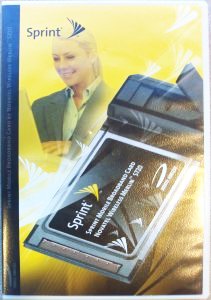Jon, T-Mo USA isn’t going to deploy HSPA in their 1900 MHz PCS spectrum because they are the most spectrum starved of all the national US carriers. They need their 1900 MHz blocks for regular voice calls. That’s why the spent $4 billion in the AWS auction last summer to buy up as much 1700MHz spectrum as they could. They are going to deploy HSPA in their 1700MHz spectrum. But first the government needs to move government agencies out of the 1700MHz spectrum, which is going slowly. So T-Mobile is between a rock (growing their subscriber base) and a hard place (government agencies that are slow to move out of the 1700MHz AWS band so that cellular companies can use the spectrum they bought).
Sprint has _GOBS_ of spectrum. They have 30MHz or more over the entire US in the 1900 MHz band, plus 10 or 20 MHz in the Nextel SMR bands around 800MHz. Sprint has so much spectrum, they rent it out to MVNOs like Helio and Virgin Mobile, then they fill their swimming pool with more, do laps in it, and use still more to light their cubans and have tankfarms left over. They have farkloads of 2.5 GHz spectrum in which they are already starting to deploy WiMAX. They were part of a consortium (SpectrumCo) that bought yet more spectrum in the 1700MHz AWS auction.
AT&T and Verizon have lots of spectrum because they either used to be or bought up companies that had licenses at 850MHz from the original cellular auction in the early 80s, plus they have spectrum in the PCS bands at 1900MHz. AT&T still operates the largest AMPS (ie, analog) cellular network in the country, but in 3 months they get to turn the lights out on that and move it over to GSM 850. Verizon and Cingular both bid on chunks of spectrum in the AWS auction at 1700MHz, but they don’t need it yet because they have so much Cellular and PCS spectrum available. That’s why AT&T can deploy HSPA in the 1900MHz and 850MHz bands, and why Verizon can deploy EVDO at 1900MHz.
T-Mobile has none of that. You won’t see HSPA on T-Mobile until 2008 at the earliest, and then only in large, important markets. They do apparently have UMTS running in Bellevue around their testing labs in the 1900MHz band though.
The US has 6 bands that are or will be used for cellular communications:
- 700MHz – the new band, to be auctioned in February next year. There “open access” rules tied to about 1/3rd of the spectrum to stop carrier locks on devices.
- 800MHz SMR – where Nextel operates; Nextel bought up taxi dispatch operators nationwide and converted them over to iDEN back when only 2 cellular licenses were available in each market.
- 850MHz – the original cellular band, initially AMPS but now being converted over to GSM and CDMA
- 1900MHz – the PCS band, digital from the start and where Sprint and Voicestream (now T-Mobile) entered the cellular industry. All the major players have spectrum here.
- 1700MHz – the AWS bands auctioned last year for broadband data like HSPA and EVDO
- 2500MHz – the “educational” band in which both Sprint and Clearwire have vast holdings and will deploy nationwide WiMAX networks over the next two years
This post brought to you by the letter G, the number 4, and a large furry dog that hides behind trees and doesn’t come out.
